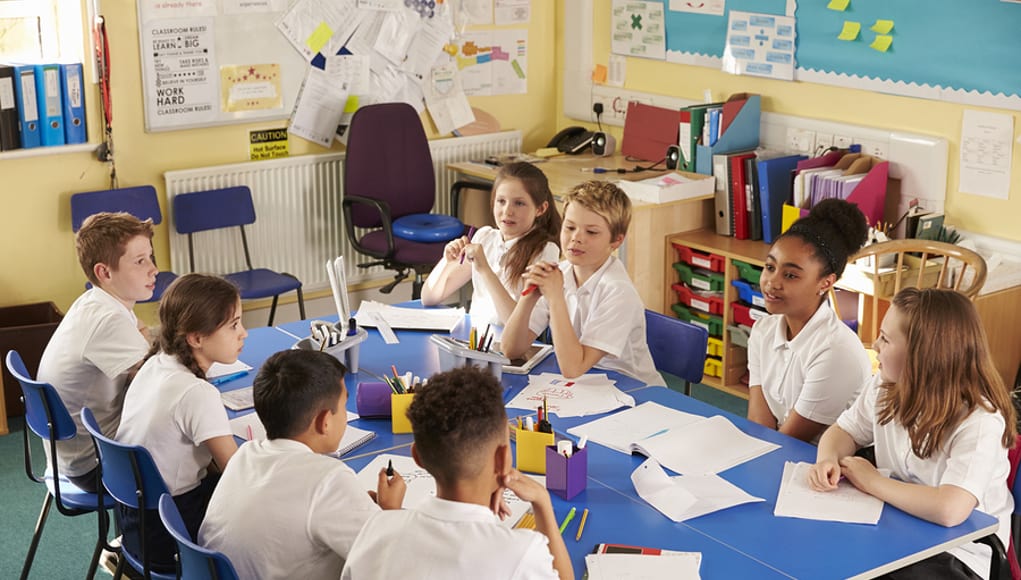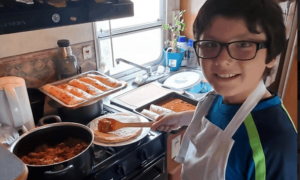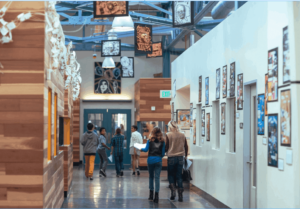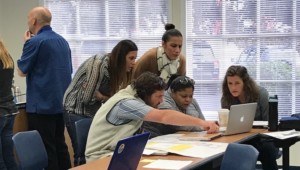How to Connect Current Events to Project-Based Learning

By: Jodie Brivic
STEM students live in a digital age—an age where they can look up any fact within seconds. Gone is the constant memorization and regurgitation of information. Students now need to know how to practically apply the knowledge that is at their fingertips to be successful in a project-based learning classroom. As a science teacher at The Village School in Houston, my ultimate goal is for my students to see the real-world applications of the curriculum.
Because I am a science teacher, I have my students read scientific news articles to help them understand how school work directly correlates to real problems the world is facing and possible solutions to solve those challenges. A similar approach can be used across subjects.
Exploring Beyond the Walls of the Classroom
Project-based learning is so important because it allows inquiry-based instruction, collaboration, and engagement.
Students respond well to seeing topics from their textbooks referenced in published studies. When we start our lesson on the most basic animal—the sponge—many students don’t realize the purpose of studying such a “lifeless” creature.
But, I bring up the article, Sponge Bacterium Found to Encapsulate Arsenic Drawn from Environment, and we learn about a very specific way that sponges could benefit us. We also learn that coral reefs actually have the ability to “eat plastics,” and that, “researchers in Australia have found that corals…will eat micro-plastic pollution. Microplastics are tiny fragments of plastic in the environment and are a widespread contaminant in marine ecosystems.”
When we move on to chemistry units, students begin to understand—through the aid of recent publications—that the Periodic Table of Elements is not a poster that should ever be laminated, but rather an ever-changing chart with new discoveries each year. In recent times, for example, a UT physicist discovered four new super-heavy chemical elements. Having my students read news articles allows them to look beyond the walls of the classroom for connections to real-world solutions and problems.
While these examples are specific to science, the most important points to remember when bringing curriculum-related articles into any classroom are:
- An article is only as good as the connections you make. How does the current event tie into school curriculum, your personal life or concerns you see around you? This makes it real for the students and helps them understand how they can impact actual things happening in the world right now.
- It is not just about the content. Remember to consider visuals to present, the writing style of the reporter (peer-journal, investigative reporter, feature story, etc.), the intended audience and any bias that may be present.
 Turning Current Events into Creative Solutions
Turning Current Events into Creative Solutions
Every year, we start by reading and analyzing current events, and I instruct my students to research the newest scientific innovations that interest them. After studying these breakthroughs, we identify today’s problems that need to be addressed. Students study issues such as:
- The impact of plastic pollution in our oceans
- New forms of bacteria that can become resistant to antibiotics within minutes
- The rise of childhood obesity levels
Next, students think about how they could apply new science and technology to solve a current issue and help society. For example, they might contemplate how plastic eating corals could address our ocean pollution problem. Or, how the discovery of new elements could lead to new products such as safer cars or more affordable nanotechnology.
A group of my students read an article entitled Brain regeneration: Crayfish turn blood into neurons. The students were so fascinated by this idea that they wanted to learn if it was possible to harvest the neuron regenerating attributes from crayfish stem cells and safely merge them with human stem cells, possibly curing millions of people suffering from paralysis.
This year, the article, “New Type of Soft, Growing Robot Created,” is a main focus of conversation, as artificial intelligence continues to change how the world works. We discussed its potential uses in medical fields and on search and rescue missions. In Texas, Hurricane Harvey is still fresh on our minds, and we thought of ways the robot could be used in the future to find people trapped in their homes during disasters.
When instructing students to brainstorm a solution to a current event, it’s important to encourage them to:
- Treat all ideas equally. Every idea is worth exploring and there are no bad suggestions. Remind students that most problems don’t have just one solution and part of someone’s idea can be combined with someone else’s to get the right answer.
- Get it on paper, don’t overthink, don’t ask questions. Questions come later. During the brainstorming process, you want everyone to offer up a thought and not overanalyze it while you’re writing it down.
- Think big! There are no limits when you are brainstorming. Big ideas may not always work, but they may offer some kernels to pursue.

It’s natural to connect recent articles and current events to any classroom that focuses on real-world problems and solutions. We can help students connect what they learn in class, read in news articles and watch on YouTube to higher-order research skills and analyses—so they can change the world.
Jodie Brivic is a passionate science teacher at The Village School in Houston, TX, which is part of Nord Anglia Education. She utilizes current events to explore real-world issues with her students and encourage them to find exciting and innovative solutions to these problems. Follow Jodie on Twitter.
For more, see:
- Project-Based Learning Connects Real World With Deep Impact
- The Development of High-Quality Project-Based Learning
- Globally Connecting Learners through Project-Based Learning
Stay in-the-know with all things edtech and innovations in learning by signing up to receive our weekly newsletter, Smart Update.





0 Comments
Leave a Comment
Your email address will not be published. All fields are required.